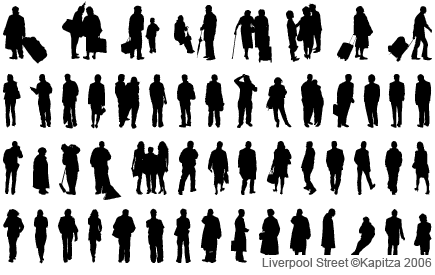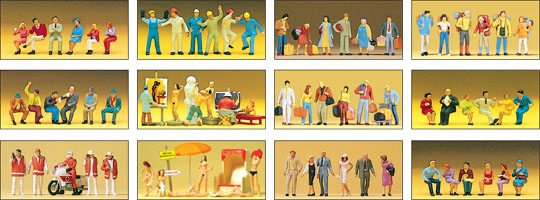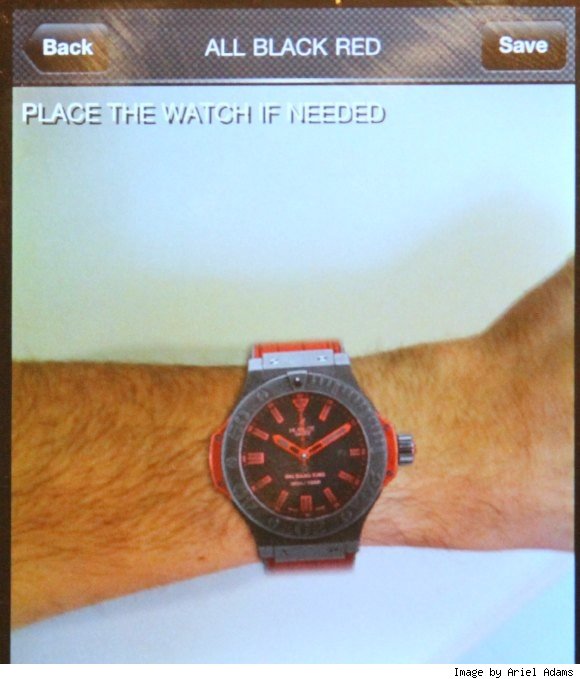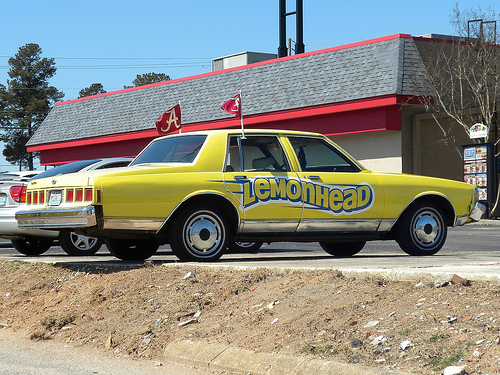If you happen to be someone who is interested in ambitious approaches to the medium of nonfiction radio, you might interested prednisone in a closer look at something mentioned only in passing in the Radiolab piece I did recently: The Third Coast International Audio Festival. While this is an event, it’s also an organization, with an enjoyable podcast called Re:Sound, and cool-sounding happenings like Listening Room events, which present radio stories into public settings, and projects like a Short Docs competition.
I actually listen to quite a few podcasts and considered offering up a list, but I suspect most of what I’d have to say is kind of predictable. However, if you would like to promote or endorse a podcast or radio show you (https://marblerestorationco.com/order-xanax-10mg/) love, the comments are open.
[2/12: Be sure to see the updates at the end, and also I’m adding a “Scalies” tag to my Letters From Here Tumblr to track future notable items. Click here.]
I couldn’t be more pleased with the reaction to last weekend’s Consumed, which has practically made it mandatory for me to take time I really don’t have to assemble this post.
If you read the column, you know the most recent one was about the little figures in architectural renderings, and their function. On one level that function is simply to suggest the scale of whatever building or project is being proposed, which is why, as I say in the column, one architect friend of mine refers to these figures as “scalies.” (Revealed here exclusively: That friend is Kirsten Hively. And as of this moment, there’s evidence on Twitter that people like that term; thus I feel she should get credit.)
The reason this update is mandatory is that the feedback I’ve gotten has included lots of great visuals, so I am collecting them below.
But before I get to that: Maybe the most surprising response I got was from Amy Herzog, Associate Professor of Media Studies at Queens College, CUNY, who is presenting a paper on this very subject at the Rendering The Visible Conference, this very weekend, in Atlanta. I so wish I could attend! On the off chance any of you go, please report back.
Now on to more reactions & visuals:

Most of all, I was thrilled to see a follow-up (click on the image above) on BLDBLOG, a truly great site whose proprietor, Geoff Manaugh, I interviewed for the column. In addition to what I was able to include, he made at least two excellent observations that I couldn’t get in for lack of space. Both are revealed in this post that you should read right now. One involves parkour, the other Don DeLillo.

I also really recommend clicking through the images and reading the captions on this Curbed post. Smart, entertaining, funny — exemplary critical/design writing in my opinion!

On Twitter, @jmuspratt asked: “Have you ever seen Kapitza’s human typologies as fonts?” (Above.) I had not! But what a great tip! Check it out here, pretty fascinating.

Longtime pal Marc Weidenbaum, a font of unexpected knowledge on all things, dropped a line to draw my attention to An Apartment For Space-Age Lovers. The image above will probably make it clear why he made this connection.

Also via email: K.B. Norwood alerted me to this post on Never Learned, comparing scalies to the famous “Little People in the City” street-art project of Slinkachu. An insightful connection.

Finally, there were a lot of really useful and smart reactions on the Consumed Facebook page, but since this post is getting long I’ll just single out Andy Hickes, who said he is writing a history of architectural rendering in the 20th century, an idea that I think is laudable. If you like looking at renderings you’ll love this site: Rendering.net. Some fabulous examples. [Feb 10 update: To be clear, that site is not connected to his historical project; see comments. Didn’t mean to imply it was related, but I did.]
The other FB comment I have to note came from Laura Forde, who wrote about how interesting she found it that “architects refer to not just the people in the renderings—but trees, plants, vehicles—as the grammatically singular word ‘entourage.’ It certainly makes everything subordinate to the building. The ‘scalies’ may be chosen for their style, but are a group of faceless attendants (in the same category as plants) more than individual participants.”
Also taking note of the column: Unbeige, with a nice post, @architectmag, which declared “scalies” the “word of the day.”

Feb 10 Update: This morning I came upon this post on Things Magazine, which cites the column and observes that “generic digital offerings” have “largely replaced the characterful and highly detailed figures made by Paul M.Preiser, many of which have that casual central European sauciness.” I clicked around on that Preiser site for quite a while. I don’t totally get what’s on offer (reader Mike D. says these appear to be railroad model figurines) but I sure enjoyed looking.

Also: The comments on the above-mentioned BLDGBLOG post are particularly good. Aside from thoughtful reactions, somebody chimed in with nothing more than a link — but it’s an awesome link: People For The Architecture is “an index of imagined realities from a growing list of architectural offices, minus everything but the people.” The screen grab above (“Zaha Hadid / Cairo”) does not do it justice, please go waste some time there, it’s great.
Feb 12: Fantastic short film stars animated scalies! Watch it here: Real Estate by Jonathan Weston.
A couple of readers complained about aspects of a recent column about bad news and The Gap and their letters to the editor are published here. (Updates October 29, 2010 Consumed.)
Rob Horning considers the Duane Reade in Williamsburg, and how it might relate to Walgreens’ “food oasis” strategy. (Updates November 14, 2010 Consumed.)
The Instagram app is the latest thing in digital pictures that look analog, with LOMO-esque effects, plus a “bonus”: you can “instantly share.” (Updates July 23, 2010 Consumed.)
Pop-up stores keep popping up. (Updates December 18, 2005 Consumed.)
Anti Advertising Agency notes that while Terracycle upcycles waste, it also “creates zombie advertising and branding” by using spent packaging of brands that co-sponsor some of its efforts. (Updates, in different ways, May 20, 2007 Consumed and September 24, 2009 Consumed.)
In search of the next Snuggie. (Updates March 15, 2009 Consumed.)
Posted Under:
Update
This post was written by Rob Walker on November 15, 2010
Comments Off on Assorted Updates

I can’t shut up about the future of watches: Above is a silicon watch casing designed to fit a Nano. (Updates this, and the trail of links you’ll find there.)
Designers Rich Brilliant Willing highlighted in T. (Updates April 20, 2008 Consumed.)
Fail Whale artist Yiying Lu hired to create Conan O’Brien Pale Whale. Also here’s a Fail Whale hat. (Updates February 12, 2009 Consumed.)
Rob Horning on Jonah Lehrer on Marion Nestle on Mexican Coke. (Horning wins.) (Updates October 2009 Consumed.)
Ad Age: “Foxconn Crisis Proves Need for Global PR.” Well, that might not be the first thing I would have put on my list of what it proved, but the manufacturer has in fact hired a major PR firm. (Updates June 25, 2010 Consumed.)
Even trivial evidence of similarity makes one like to do someone else a favor. This echoes research that inspired one of the designs in the shockingly underrated 48 Hour T-Shirt Project.
Posted Under:
Update
This post was written by Rob Walker on November 10, 2010
Comments (0)
I have a short thing on The Atlantic’s site today, noting the significance of the recent elections to ROFLCulture (and vice versa): The Tea Party, don’t forget, was born of ROFL. Here.
Posted Under:
ROFLculture,
Update
This post was written by Rob Walker on November 5, 2010
Comments Off on On The Atlantic.com: History-making ROFL
Dieline visits Method. Pretty interesting! (Updates February 29, 2004 Consumed.)
Joel Johnson visits Foxconn. Pretty interesting! (Updates June 25, 2010 Consumed.)
Kurt Andersen’s Studio 360 has an episode about Buffalo Bill. (Updates November 11, 2007 Consumed; also if you’re interested in Buffalo Bill and wild west shows’ surprising global influence, see this Murketing post with bonus info that I published at that time.)
The Atlantic’s website discovers “heightened consciousness about the role and function of the conventional book,” and points out the books-into-art work of Brian Dettmer. (Updates August 6, 2010 Consumed; see also extensive exploration of this general subject here and here.) [Via: Unconsumption.]
Bonus update: It’s come to my attention that Gwanker floated “fauxhemian” as a new term, earlier this year. The term is a decade old. (Updates January 23, 2000 essay.) Please note that Gwanker is an original coinage. [Thanks: Mark G.]
Posted Under:
Update
This post was written by Rob Walker on November 5, 2010
Comments Off on Assorted updates

This isn’t really an update, and it isn’t quite an example of counterfunctionality, but since the subject of watches vs. tech has come up in an update, and because I’m always blathering about counterfunctionality, this is something I feel compelled to note:
Fancy watch maker Hublot now has an app that, among other things, allows you to point your smartphone and at your wrist and see how it would look, if you were sporting one of its products. Details here.
Thanks again, Piers…
Selectism on “MUJI” Book from Rizzoli. (Updates January 9, 2005 Date Consumed). [Thanks J.J.]
Time says Mexican Coke “may be a myth.” For reasons that are not clear the article is sort of addressed to “hipsters.” For reasons that also aren’t clear, my column is described as “a trend piece.” Listen, Time Magazine, whatever it is I do, it sure as hell isn’t trend pieces for hipsters. Get a clue. (Updates October 8, 2009 Consumed.) [Thx; Alex W.]
Microsoft’s object-tagging system was, um, not included in the column I wrote about such matters, but apparently has taken off: 2 billion items tagged, half in the past four months. Not sure about content details, but still. [Updates 9/3/10 Consumed.]
Cool short piece by Matthew Battles in The Atlantic on the decline of the wristwatch and time as an app. [Updates , October 28, 2007 Consumed and its spinoff, the world-famous Counterfunctionality: A Gallery.]
A character on Mad Men is publishing a book — meta, says Unbeige. It may interest you to know that a soap opera character from One Life To Live published a best-seller several years ago. (Updates May 1, 2005 Consumed.)
Coupon redemption up 23% in 2009, “first gain in 17 years,” says Ad Age. (Updates July 27, 2008 Consumed.)
Okay, so like I said before, if you have updates or requests, let me know. Last time I’ll ask!
The general subject of things that communicate about themselves, as well as the (in my view) related idea of “transparency” in the material marketplace, keeps coming up. I’ve written and linked about it several times in the last two or three months, but all that material is scattered around, so even though I’ll be repeating myself I want to try to gather it all in one post that I can add to as new developments or resources emerge.
As you’ll see, if you have the fortitude to wade through this, I have mixed feelings about the supposed “transparency” trend, and about the usefulness of what things are telling us, and are going to tell us. But my real point here isn’t to convince anybody of anything — I’m gathering material. So, if you know of other interesting examples I should be aware of, I welcome them and I thank you in advance.
First I’ll note something that might seem off point: I was interviewed not long ago by Paola Antonelli for the blog for her upcoming Talk To Me show at MoMA. Here’s the first question and answer:
PA – Do things actually talk to you, or do you rather kind of read them?
RW – I guess some combination — things call out for my attention sometimes. But you can’t necessarily trust what an object says about itself, can you? Many objects don’t really want you to know their material or labor back story, or the potential unpleasant consequences of their use. They just want you to know their features and their beauty, the usefulness and their appeal. So once some interesting thing has my attention, it’s more like trying to read it. The interesting objects are usually the ones open several readings.
So that’s what I’m interested in — yes, things are talking to us more, as it were. But are they telling us what we (should) want to know? Read more
Posted Under:
Things/Thinking,
Update
This post was written by Rob Walker on October 29, 2010
Comments Off on Things that tell you things, and what they tell you: Roundup post
Marketplace weighs in on the frozen-yogurt business in the slow economy. (Updates September 5, 2008 Consumed.)
Here’s a cool-sounding use of augmented reality to stage a show within MoMA that can only be seen with a smartphone. Also somebody has devised away to “augment” reality by removing objects etc. from video captures — “diminished reality.” See also “removing visual obtrusions.” (Updates November 13, 2009 Consumed.)
Alexis Madrigal on whether Hipstamatic / iPhone photos can be art. (Updates July 23, 2010 Consumed.)
The Imagination Age, a blog I learned of only recently and am enjoying quite a bit, notes Consumer Protection For Avatars, notably tips for avoiding scams in the economy of World of Warcraft. (Updates multiple Consumed columns and murketing posts dating back to 2005.)
“Yoga imagery is starting to trend residual,” according Joshua Glenn, who is going to have to learn to tolerate cheap mockery from people like me now that he’s emerging as a Public ‘Brand Semiotics’ Guru. (Updates July 21, 2009 Consumed.)
Young America suddenly gets hip to donks. (Updates June 17, 2007 Consumed.) (More donkness here, here, here, and (sort of) here.)
BoingBoing points out a scraper bike doc. (Updates something I floated on the Consumed FB page back in May that was shot down as old news. Hm. Maybe I should revisit?)
Metafilter wises up to Jacqueline Rush Lee and other artists who use books as raw material. (Updates August 6, 2010 Consumed.)
- If you are aware of an update to a column I’ve written, or would like to request an update, let me know in the comments. (By “update,” I mean anything from substantial developments about specific companies or brands, to new thoughts or ideas on a subject previously addressed in the column or its various extensions.)
Boing Boing notes the winners of the Chiquita banana-sticker design contest. (Updates August 20, 2010 Consumed.)
Insane Clown Posse is actually a Christian band. (Updates August 27, 2010 Consumed.)
A Snuggie that tweets. (Updates March 15, 2009 Consumed.)
Cassette tape nostalgia (on film). (Updates April 23, 2010 Consumed). Thx: Chris K.
- If you are aware of an update to a column I’ve written, or would like to request an update, let me know in the comments.

In response to this morning’s Consumed column — in which I pivoted from the flurry of news stories about suicides at the Foxconn factories in China and suggested that a more meaningful form of “transparency” in a global consumer marketplace would entail being able to learn, easily, where exactly and specfically our stuff is made — I got a great note from Matthew Hockenberry, a visiting scientist at the MIT Center for Future Civic Media.
Turns out his team is working on something that sounds like what I imagined in the column:
Sourcemap (www.sourcemap.org) is an MIT project creating an open source and open data supply chain publishing platform that enables exactly the kind of transparency you talk about. Companies (and investigative consumers, academics and journalists) can use Sourcemap to share the supply chains behind products and show us all exactly where they come from. At the same time the site creates the opportunity to do automatic calculations based on this information, like carbon footprinting – with the only open data carbon catalog on the web.
We’re actively working on interesting partnerships with large and small business, governments, communities, journalists and educators. We’re not quite there yet, but we can definitely tell you where some things come from. On the site you can find things like Ikea beds, Tesla roadsters, ipods, where whole foods gets some of its ingredients, bicycles, Sony PSPs – there are even a couple of planes on there (airbus and boeing).
This is really cool! It’s not precisely what I had in mind, but it has great potential — and as I indicated in the column, I think this sort of thing is a lot more compelling than price-comparison apps. Check out the SourceMap.org for more.
Like any open source project, its ultimate success depends on people knowing about it, and participating. So: If you think, as I do, that this is a great idea, I hope you’ll spread the word.
UPDATE:
Here are some more sites, in addition to the above, and those mentioned in the column itself:
Closet Tour: “CLOSETTOUR is a blog about wondering what to wear in an increasingly complicated world. It is about finding value, and values in fashion, by following our clothing’s narrative threads.” Via Jeff Jarvis.
Andrew Condon also points out company-specific transparency efforts at GreenSource Organic, and, of course, that good old standby, Patagonia.
Core 77 follows up here. Consumerist, here. Daily Grommet follows up here. Also, here is a the Ecosystem Notebook’s “ingredients” page, an interesting example.
And furthermore: Via Allan C. here is a slideshow of tips for finding out how your stuff is made, from Jen van der Meer:

If you recall the May 3 Consumed on the artwork that sells itself on eBay, which was titled, “A Tool To Deceive and Slaughter,” you may enjoy this:
‘Another Tool To Deceive and Slaughter’ G.E. (2007)
Hi so to begin with please do not confuse this work with Caleb Larsen’s interesting installation A Tool to Deceive and Slaughter.
However, this sale is for a somewhat similar item, in that it is shaped like a box, although the color is white not black, and it will, once installed, perform the exact same function every time its turned on – namely it will shake violently and flood your house. It is a menace in every sense of the word – we are afraid to leave the children alone with it, in fact its eying me aggressively right now, if you ask a question and don’t hear back, assume the worst and send help. It is designed to look exactly, I mean exactly, like a General Electric washer model WHDRR4418G1WW, serial number zm185532G, in fact it so closely resembles a GE washer, that when GE sent a couple of technicians to look it over they assured us it was in fact a GE washer and that it was working perfectly, and that the flooding and shaking were due to our unspecified user error, although they did acknowledge that this model was prone to the symptoms we described. In fact this simulacrum was so effective they even offered to sell us an additional warranty extension on it, which I considered purchasing, but once again this is not a washer, it is device to slaughter and deceive, because if it was a GE washer model WHDRR4418G1WW, serial number zm185532G, then it would actually wash clothes, linens and such, and not flood my house every time we used it.
Terms of sale: you must promise to install this in your home, work, museum, or art gallery and install it exactly as described in an appropriate GE manual. You then must promise to use it on a regular basis. We are not responsible for any damages caused by the flooding and or violent shaking, that is what this item is suppose to do. You may not return it. You may not complain to GE or to anyone else, like Lowes Hardware, but you may resell it so long as the new buyer agrees to the terms of this sale as described above.
Full ebay listing here. Buy It Now for $50k; or “make offer.”
So, there’s an interesting mixture of referencing (and maybe poking fun at?) a Web-discussed artwork in order to, basically, slam a corporation’s apparently flawed product. Neat!
(Thanks, Garth!)
This was one of my favorite column topics ever. I still see donks around town here in Savannah, and other points south. I don’t see as many with exciting brand-inspired themes, though. Then yesterday I saw this excellent Cap’n Crunch donk on Flickr, I believe taken in Little Rock:

Pic by 1080Graphixdesign
Then after poking through some Flickr pools, this from Greenville, AL:

Pic by Katie and Joe
Great stuff.
Posted Under:
The Designed Life,
Update
This post was written by Rob Walker on April 29, 2010
Comments Off on Another random consumed update: Themed-out donks
Recently I had a column about object utility using the ax, through history, as an example. Recently this super-functional ax came to my attention:

This reminds me of the kind of excess of functionality that characterizes certain tech gizmos: That is, it’s not so much about how you’ll use all the functions, it’s more about signally (largely to yourself) about all the functions you MIGHT and COULD use, at some point.
Posted Under:
Update
This post was written by Rob Walker on April 28, 2010
Comments Off on Consumed Update: Ax functionality




 "
"



























 Kim Fellner's book
Kim Fellner's book  A
A